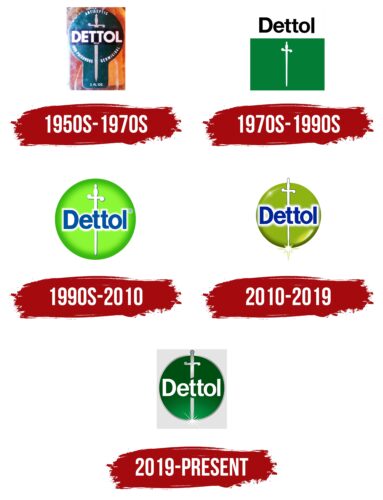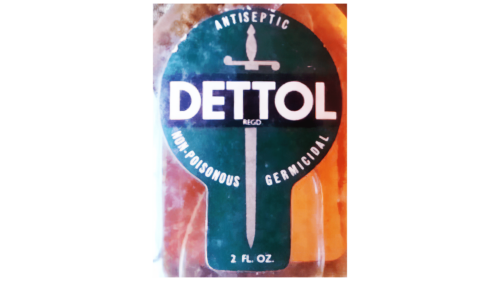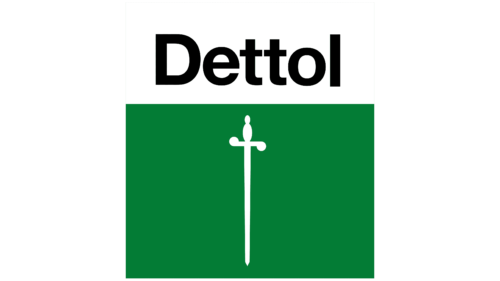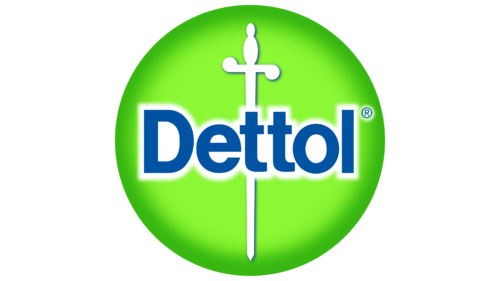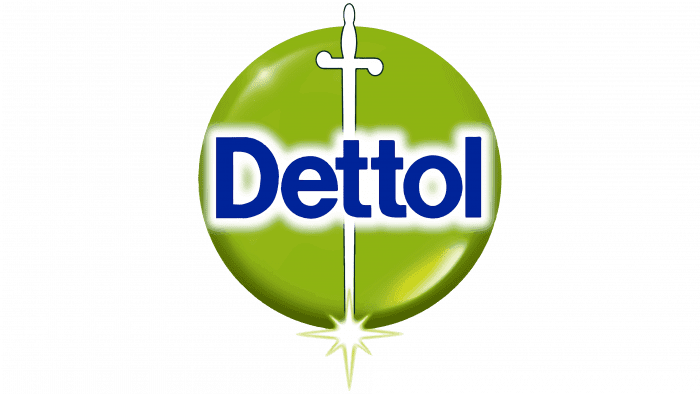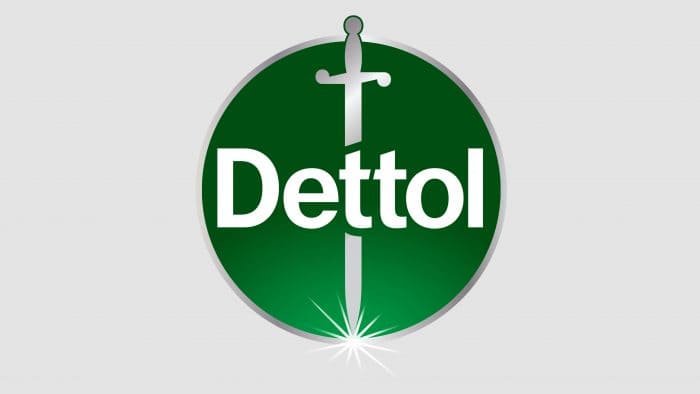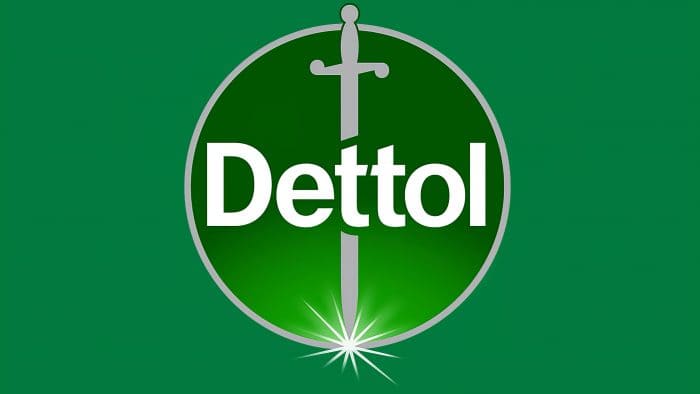The Dettol logo is a symbol of protection. The company’s sharp sword cuts through and destroys most pathogens. The disinfectants stop the growth and development of pathogens, keeping you healthy.
Dettol: Brand overview
Dettol is a line of antiseptics first launched in 1932. The brand belongs to the Anglo-Dutch company Reckitt Benckiser and specializes in the production of disinfectants and cleaning products. All products are made according to a unique recipe.
Meaning and History
The logo clearly confirms the manufacturer’s claim that its antiseptic preparations kill 99.99% of bacteria, leaving them no chance. That’s why the designers chose a sharpened sword as the main element.
What is Dettol?
Dettol is a line of disinfectants and antiseptics to effectively combat various contaminants. It was founded by the British company Reckitt in 1932 when mass production began. The products are sold all over the world, except in the United States.
1933 – 1950s
At this point, during this period of the company’s development, the brand’s logo and emblem are unknown.
1950s – 1970s
In the 1950s, a single white sword appeared on the emblem, indicating the complete destruction of bacteria and the exceptional sterility of treated surfaces. Across it was the inscription “Dettol,” made in large capital letters sans-serif. A black shadow was visible against it. Two-thirds of the sword was surrounded by a ring with clarifying information about the antiseptic drug. The logo had the shape of a table tennis racket.
1970s – 1990s
After the redesign, a minimalist version of the logo appeared with a white rapier on a green rectangle. This testified to the increased popularity of the hygiene product and its recognizability among the population. The geometric figure was placed vertically, and above it – the name of the product in black letters, translated into lower case.
1990s – 2010
Another modification brought a radically changed logo. Firstly, it became round, and secondly, light. The green gradient background became darker towards the edges, highlighting a white sword with a shaped hilt: it had handles turned in different directions. The developers shifted the brand name to the center and added a blurred white background to it, resembling a glow. The font was colored blue. Neither the lettering nor the cold stabbing weapon went outside the circle.
2010 – 2019
During this period, the rapier was very thin and white with a gracefully curved hilt. Underneath it was a dazzling glow with rays diverging in different directions. The background of the main element was a light green circle with a darkening at the bottom. On top was the word “Dettol,” with a blurred white outline indicating the purity around it.
2019 – today
The modern version consists of a large sword, with which the designers replaced the lightsaber. With this, they emphasized the increased ability of the preparations to destroy bacteria. The delicate green color was changed to a dark color, brightening the lower part of the circle, where a radiant glow emanated from the end of the blade. The background is surrounded by a gray ring.
Dettol: Interesting Facts
Dettol is a brand known for keeping things clean and fighting off germs. It’s made by a British company called Reckitt and has become a must-have in homes everywhere, with products like soaps, wipes, and sanitizers.
- How It Started: In 1932, Dettol first appeared in hospitals to help keep things sterile during surgeries. It was good at stopping infections.
- Helping in War: During World War II, Dettol was crucial for keeping soldiers and mothers safe from sickness by ensuring that things were clean and germ-free.
- Lots of Choices: Dettol has made many different products over time, not just the original liquid. Now, they have hand sanitizers, cleaning sprays, and even baby products.
- Everywhere You Go: Dettol products are available in more than 124 countries, each with products made just right for its inhabitants.
- Teaching Cleanliness: Dettol also helps teach people how staying clean, like washing hands, can keep you from getting sick.
- Fighting All Germs: Dettol works against germs, like bacteria and viruses, keeping families safe and healthy.
- Always Getting Better: Dettol keeps coming up with new, better ways to keep things clean and safe, even making products that are kinder to the skin and the planet.
- Trusted Name: Their promise, “Be 100% sure,” means you can trust Dettol to protect your family. Their logo is known all over the world.
- Important During the Pandemic: When COVID-19 hit, everyone wanted Dettol to help stop the virus by cleaning hands and surfaces, so they made even more products.
- Doing Good: Dettol is working on being better for the environment by using less plastic and helping communities stay healthy and clean.
Dettol has been around for a long time, keeping people and places germ-free. With its new ideas and commitment to doing good, Dettol keeps showing why it’s a top choice for fighting germs.
Font and Colors
The individual insignia first depicted a sword, then a sword. The tip of the blade sparkles with sharpness and clarity. This means that the cold-stabbing weapon aptly and blatantly kills all dangerous types of microflora, protecting a person from harmful influences. Both variants of the logo are superficially similar as they reflect the same concept.
The font used to write the brand name has never changed. The word “Dettol” is written in a grotesque font from the Sans Serif category. The first letter, “t,” is combined with the sword blade and is an extension of it. The main colors of both emblems are green and white shades. Earlier, there was also blue; now, dark gray is used for contrast.
Dettol color codes
| Argent | Hex color: | #bfbfc0 |
|---|---|---|
| RGB: | 191 191 192 | |
| CMYK: | 1 1 0 25 | |
| Pantone: | PMS 428 C |
| Forest Green | Hex color: | #004f12 |
|---|---|---|
| RGB: | 0 79 18 | |
| CMYK: | 100 0 77 69 | |
| Pantone: | PMS 356 C |
| Philippine Green | Hex color: | #018d3f |
|---|---|---|
| RGB: | 1 141 63 | |
| CMYK: | 99 0 55 45 | |
| Pantone: | PMS 355 C |

